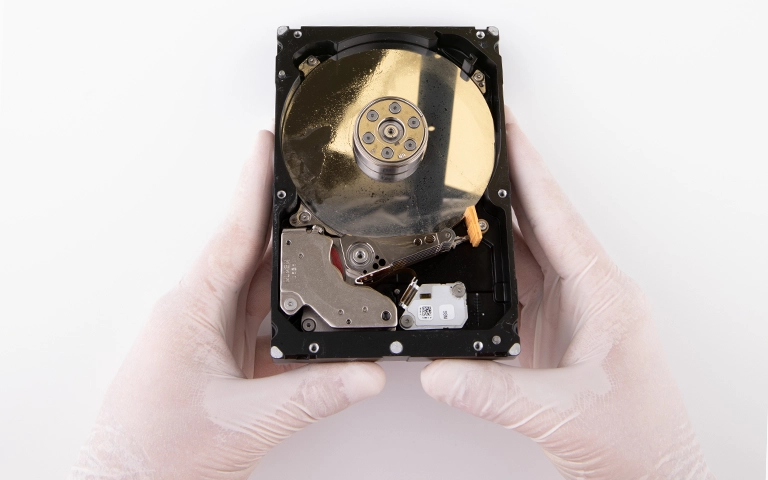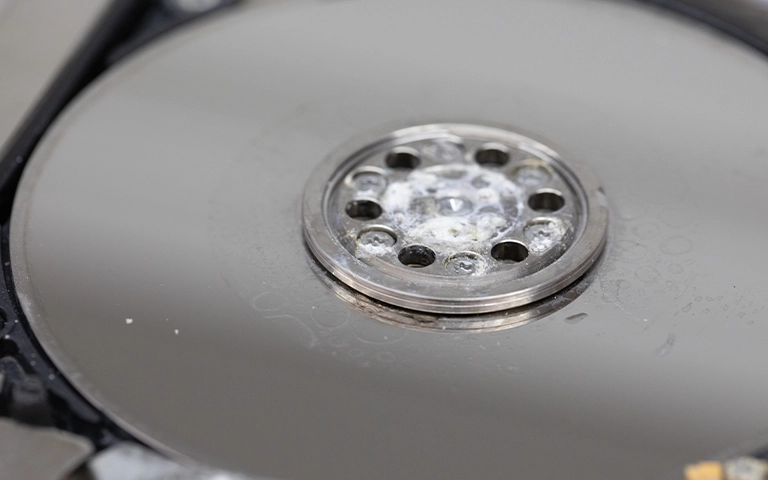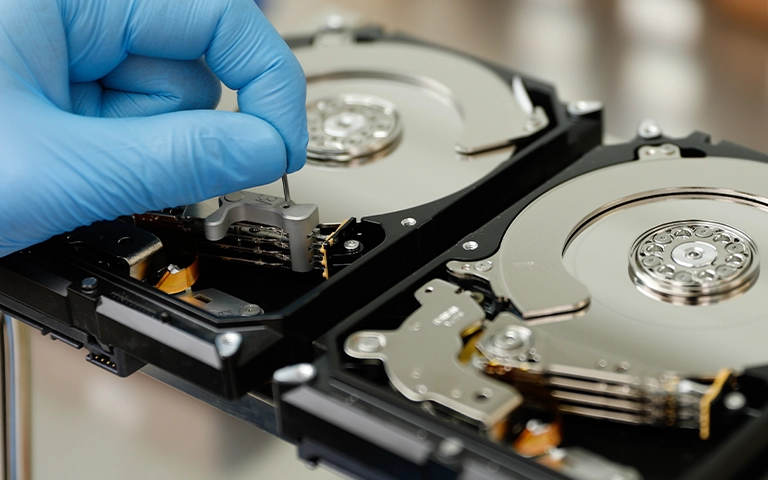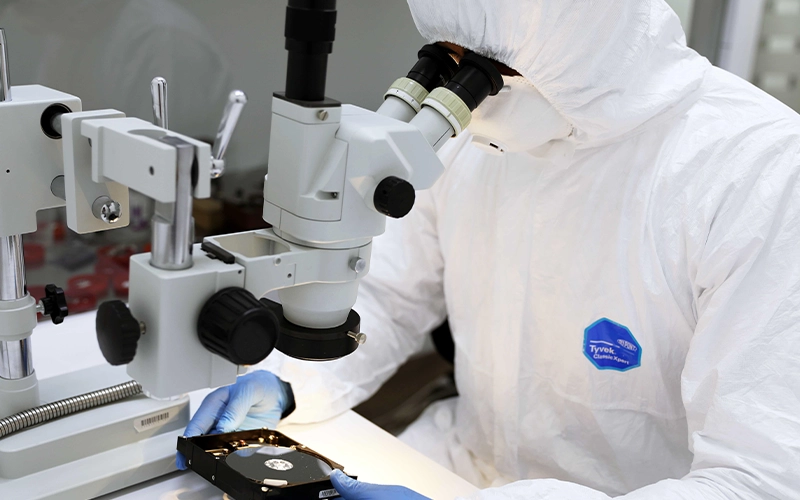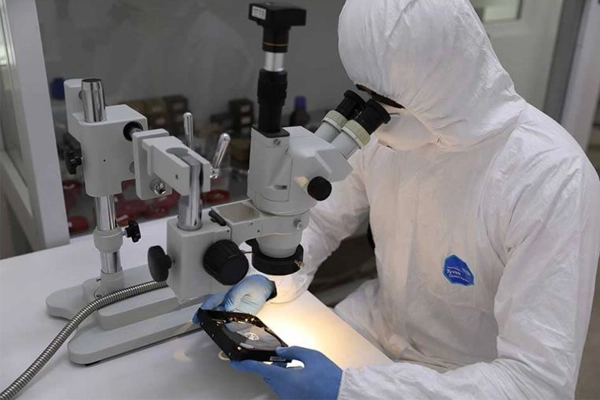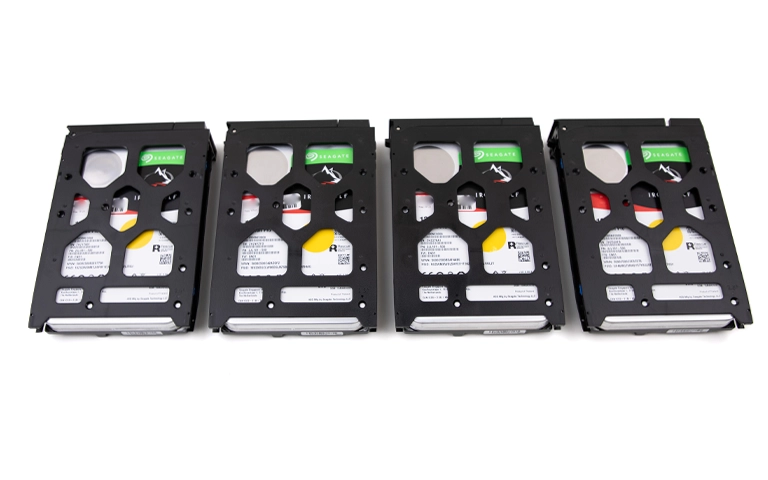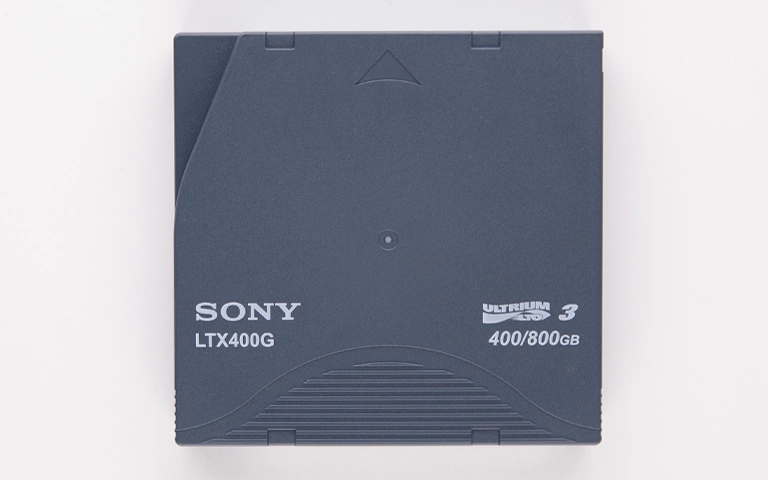Liquid exposure from spills, floods, or submersion presents a serious threat to hard drives. Unlike physical impacts, liquid damage introduces immediate electrical risks. It also initiates corrosion that progressively worsens over time, further endangering the drive and stored data.
If your hard drive has encountered water or other liquids, your immediate actions, or lack thereof, are critical. Correct handling is essential to maximize the chances of successful water damaged hard drive recovery. Incorrect steps, even if well-intentioned, can quickly result in permanent data loss.
Critical First Steps: What NOT To Do With a Wet Hard Drive
Before taking any other action, understand these crucial prohibitions. Ignoring these warnings significantly increases the risk of irreversible drive failure and data loss.
- DO NOT Apply Power / Turn It On! This is the single most important rule. Liquids conduct electricity. Applying power to wet electronic components (especially the Printed Circuit Board – PCB) will likely cause short circuits, damaging sensitive components. This can cause more damage than the liquid itself.
- DO NOT Attempt to Dry It with Heat (Hair Dryer, Oven, Sunlight)! Heat can warp delicate internal components like platters and heads, and can bake contaminants onto surfaces, accelerating corrosion.
- DO NOT Use Rice! Rice is ineffective for internal moisture in sealed hard drives (Head and Disk Assembly – HDA) and can introduce dust/starch contaminants.
- DO NOT Shake or Tilt Excessively! This can spread liquid further inside the enclosure, potentially contaminating platters or heads if the seal was compromised.
- DO NOT Open the Drive Casing! Internal components are extremely sensitive to contaminants. Opening the drive outside a certified cleanroom exposes platters to dust, causing scratches and hindering professional recovery.
The only safe immediate actions are: remove the drive from liquid (if submerged), gently dab external moisture from the casing with a lint-free cloth (minimal tilting), and keep it powered OFF.
Understanding the Damage: Why Liquid Affects Hard Drives
Liquid intrusion causes damage through several mechanisms:
Electrical Short Circuits
Water’s conductivity allows electricity to flow improperly on the PCB, potentially overloading and destroying components. Residue left after drying can still cause shorts later if power is applied. This often requires intervention.
Corrosion
This chemical process starts quickly when conductive liquid touches metal parts (PCB traces, connectors, internal components).
- Speed: Corrosion begins rapidly and continues while moisture or residue is present.
- Liquid Type: Salt water is highly corrosive. Sugary/acidic drinks also cause aggressive corrosion and leave residues. Tap water contains minerals causing corrosion.
- Damage: Corrosion degrades conductive pathways and components, leading to failures.
Contamination
Liquids carry contaminants (minerals, salts, dirt).
- Residue: Evaporation leaves residue on all contacted surfaces, potentially including internal platters and heads if the seal was breached.
- Platter/Head Damage: Residue on platters can interfere with reading, cause head stiction, or lead to head crashes.
Limitations and Risks of DIY Drying Methods
Assuming air drying, rice, or low heat will resolve liquid exposure in hard drives is incorrect and potentially harmful.
- Trapped Moisture: The sealed Head and Disk Assembly (HDA) can trap internal moisture, allowing hidden corrosion.
- Residue Remains: Drying does not remove conductive/corrosive residues left on components.
- Heat Damage: Heat poses significant risks to delicate drive components.
- Rice Ineffectiveness: Rice cannot reach internal moisture/residues and adds contamination risk.
No safe DIY method fully dries and decontaminates hard drive components after significant liquid exposure.
Can Data Be Recovered From a Water Damaged Hard Drive?
Yes, data recovery from a water damaged hard drive is often possible, especially if the drive was NOT powered on while wet and received prompt professional attention. Success depends on liquid type, exposure duration, and extent of internal contamination/corrosion. Specialized cleaning and component replacement in a cleanroom are typically required.
Don't Let Data Loss Ruin Your Business
Minimize business disruption. We retrieve lost data fast, so you can focus on what matters.
Professional Data Recovery: The Recommended Path for Data Safety
Recovering data from a water damaged hard drive requires specialized knowledge, equipment, and controlled procedures:
- Safe Handling: Preventing power application; initial external assessment.
- Specialized Cleaning:
- PCB Cleaning: Meticulous cleaning with appropriate solutions (e.g., isopropyl alcohol, ultrasonic baths) to remove moisture/residue, followed by careful drying and inspection.
- Internal Assessment (Cleanroom Required): If internal contamination is suspected or issues persist after PCB cleaning, requires opening in a certified cleanroom.
- Internal Cleaning (If Necessary): Delicate, specialized procedures to attempt cleaning of internal components (platters, heads), if contaminated. This is complex and risky.
- Component Repair/Replacement: Repairing/replacing damaged PCB components (micro-soldering, ROM transfer). Internal parts like head assemblies may need replacement.
- Drive Imaging: Creating a sector-level clone once the drive (or rebuilt version) is stable enough to extract data safely.
- Data Reconstruction: Analyzing cloned data to retrieve files.
This process addresses electrical damage, corrosion, and contamination..
Emergency Data Recovery Services
Unexpected data loss? Whether it’s a crashed system, failed storage device, or accidental deletion, our 24/7 emergency recovery service ensures priority assistance to retrieve your critical data.
Factors Affecting Water Damaged Drive Recovery Success
- Time Elapsed: Prompt action yields better results; corrosion progresses over time.
- Type of Liquid: Clean water is less damaging than salt water, sugary drinks, or floodwater.
- Power Status: Power application while wet greatly increases severe PCB damage risk.
- Internal Contamination Extent: Platter contamination significantly complicates recovery.
- Professional Handling: Prompt delivery to experienced professionals using correct procedures is vital for water damaged hard drive recovery.
How PITS Data Recovery Handles Liquid Damage Data Recovery
PITS Data Recovery has extensive experience with liquid-damaged media:
Specialized Cleaning Stations: Industry-standard techniques for safe component cleaning.
Certified Cleanrooms: Contaminant-free environment for internal work.
Component-Level Expertise: Advanced micro-soldering for PCB repair/ROM transfers.
Advanced Imaging Tools: Techniques for data recovery from damaged drives.
We provide thorough evaluation and realistic recovery prognosis. Visit our main Hard Drive Data Recovery Service Page .
Prevention: Keeping Drives Dry
The best approach is prevention:
- Keep drinks and liquids away from computers and external drives.
- Use waterproof or water-resistant enclosures for external drives if working in potentially wet environments.
- Store backups safely away from potential flood risks.
- Act quickly to move electronics during flood warnings.
Get a Free Consultation.
Our recovery experts are ready to assess your device and guide you through the safest path to recovery. Fill out the form to get started.
"*" indicates required fields
Conclusion: Don't Delay with Water Damaged Drives
Liquid exposure is one of the most dangerous situations for a hard drive. Unlike many other failures, the damage is immediate (shorts) and progressive (corrosion). Do not power on a wet drive, and do not attempt DIY drying methods.
Your best, and often only, chance to recover data from a water damaged hard drive lies in getting it to experienced professionals immediately for specialized cleaning, assessment, and recovery procedures. For context on other hard drive issues, see our guide on Common Hard Drive Problems. Contact PITS Data Recovery immediately for an urgent evaluation.

